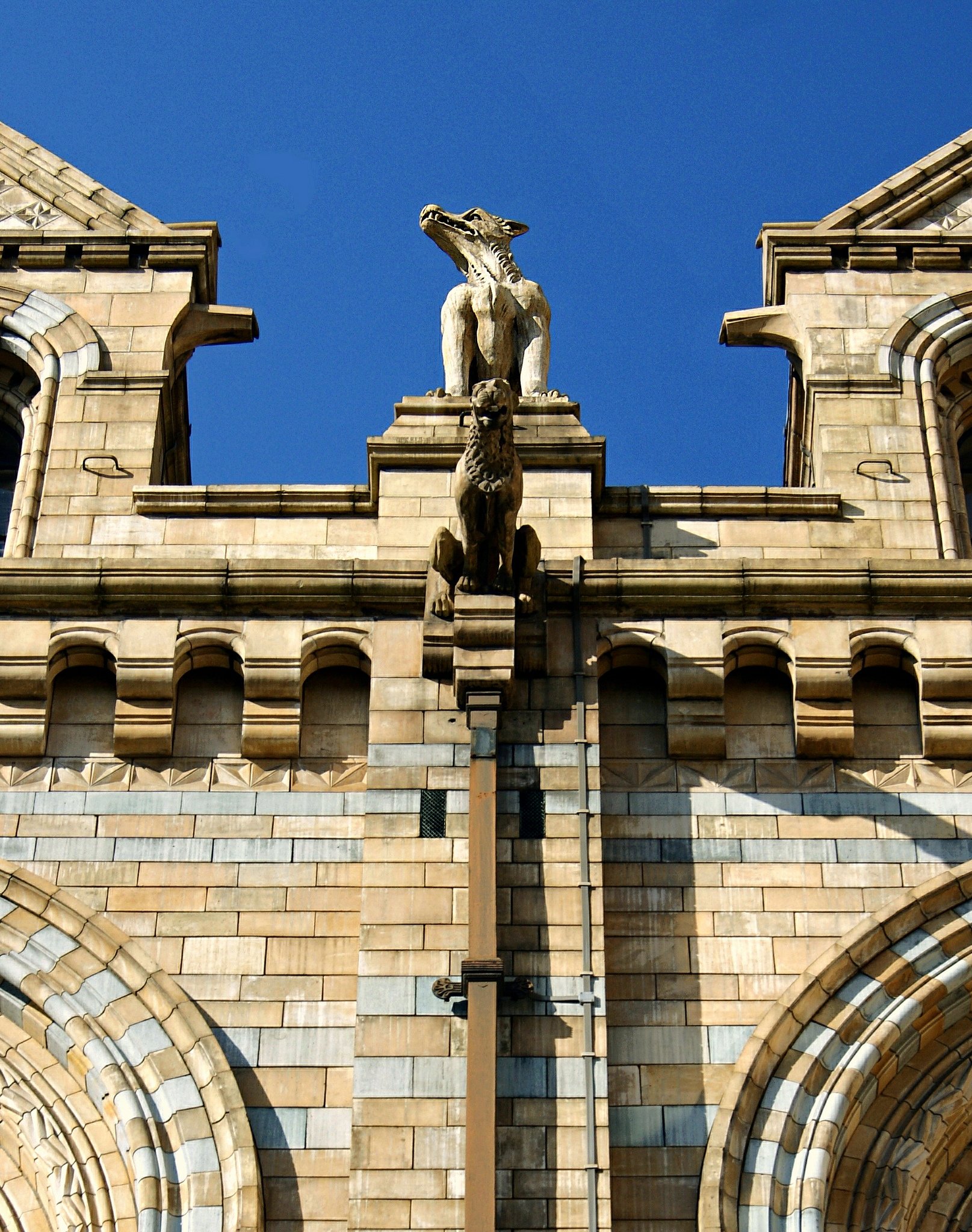#1212. Neo-Gothic Façade with Mythical Sculptures: Golden Sandstone Against a Blue Sky
The photograph captures a fragment of the façade of a majestic building in Neo-Gothic or Neo-Romanesque style. The structure is made of light sandstone that has acquired a characteristic golden hue. The architectural solution demonstrates mastery of stonework and attention to detail.
The central place in the composition is occupied by two sculptures of mythical creatures resembling gargoyles or chimeras. The upper figure represents a winged creature with an elongated snout, resembling a dragon or gargoyle, which seems to guard the building while looking upward. Below is a sculpture resembling a lion with an expressive mane, creating an impression of additional protection.
The façade is distinguished by the symmetry of its composition with a rhythmic arrangement of arched elements in the lower part. Characteristic of Neo-Gothic or Romanesque Revival framing of arches, cornices, and protruding architectural details are visible. Particularly impressive is the careful processing of the stone and the precision of block joints. Against the background of a rich blue sky, the golden stone looks especially effective, creating a strong visual contrast.
This architectural element is likely part of a large historic building—possibly a university, museum, or government institution—built during the period of fascination with historical styles in the 19th or early 20th century.
